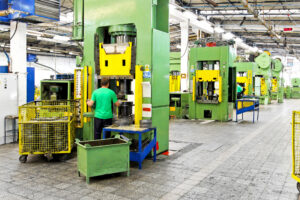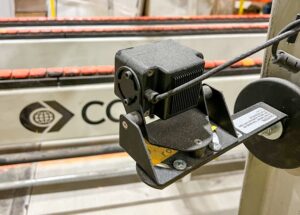Industrial facilities have always strived to improve their performance, reduce downtime, and optimize maintenance costs. More than in any other sector, these improvements can add up quickly and, ultimately, reflect in your bottom line.
As we all know, competition on price is prevalent in manufacturing, mining, food processing, and other similar areas. If you can keep your production costs down and compete on price, your balance sheet will look better.
Granted, there are areas where you can’t cut costs down—like the safety measures that keep your staff safe and the environment clean. But other areas can be optimized without harming the quality of your product or your employees’ safety.
Video monitoring is an excellent way to help keep costs under control by addressing your problem areas early on. Let’s see how you can do that:
Reduce Downtime with Industrial Video Monitoring
In manufacturing, downtime—any time production is halted—is lost money. Downtime can be planned (for instance, during scheduled maintenance or spells with no orders) or unplanned (due to unforeseen equipment failures).
The cost of downtime has gone up during the past two years, with Fortune 500 companies now paying 11% of their yearly turnover for it, or $1.5 trillion, according to a Siemens report.
Unplanned downtime wreaks the most havoc on a plant’s production because it entails delayed order fulfillment and paying to run a plant that doesn’t produce anything.
Video monitoring can help you prevent unplanned downtime by identifying potential problem areas before they turn into catastrophes. For instance, conveyor belts can snap because of faulty joints or because they were nicked or torn through contact with sharp tools.
A remote operator can monitor your production lines and spot these issues before the conveyor belts snap or become completely unusable. In turn, you can use this information to schedule repair or maintenance work, without having to unexpectedly halt production and without threatening your workers’ safety.
Reduce Maintenance Costs with Video Monitoring
Industrial equipment maintenance usually means planned downtime. While not as harmful as its unplanned counterpart, planned downtime is also a money-bleeder in any plant. This cost adds to the already steep cost of the maintenance itself.
With video monitoring, however, you can create a better maintenance schedule and thus optimize your costs too. Let’s say that your conveyor belt joints are usually scheduled for maintenance every six months.
However, your remote video operator notices that production lines have slowed down after only five months since the last inspection. This means that your productivity is impaired by equipment that may need maintenance earlier than expected.
You can use video monitoring insights to schedule maintenance work sooner and boost your productivity. Better yet, since you don’t wait until the last minute, the maintenance work itself might come at a lower cost, and you can save labor costs by moving resources around when you can plan ahead.
Predictive maintenance opportunities can be easy to identify through video monitoring. Much easier than by an inspector in your plant—as counterintuitive as that may seem. A video operator has a bird’s-eye viewpoint, which means that they can look at the whole production process at once. They can watch processes constantly, rather than just when an inspector is physically by a machine.
This makes predictive maintenance opportunities easier to spot and bottlenecks easier to identify.
Root Cause Analysis Made Easier
Have you noticed a drop in production lately? The knee-jerk reflex is to try and enhance worker productivity, but that may not be the cause at all.
Video monitoring gives you the opportunity to analyze all your processes end-to-end. Sometimes, the root cause is something that escapes even the best analysts if they don’t have that bird’s-eye view mentioned above.
For example, a minor change in your floor layout may result in your workers having to circle the conveyor belt with raw materials, which delays the entire process. A simple review of your video feed can reveal problem areas like this one and boost your productivity nearly instantly.
Choose the Industrial Video Monitoring Equipment that Enhances Performance
Not all video monitoring systems are identical. In industrial applications, for instance, off-the-shelf solutions rarely work and you will have to replace the cameras every few weeks or months.
Industrial video monitoring systems, on the other hand, are built with durability and resilience in mind, which brings your cost of ownership much lower across the lifespan of the system.
Not sure what type of video cameras and video monitors your facility needs? You shouldn’t pay for expensive features you don’t use, just like you shouldn’t buy cheap cameras that you have to replace every month.
How about a healthy balance instead? At Opticom, we’ve been advising industrial facilities on how to choose the right industrial video monitoring system for their needs for more than 50 years. Get in touch with our expert consultants and let’s get you the system you need.







